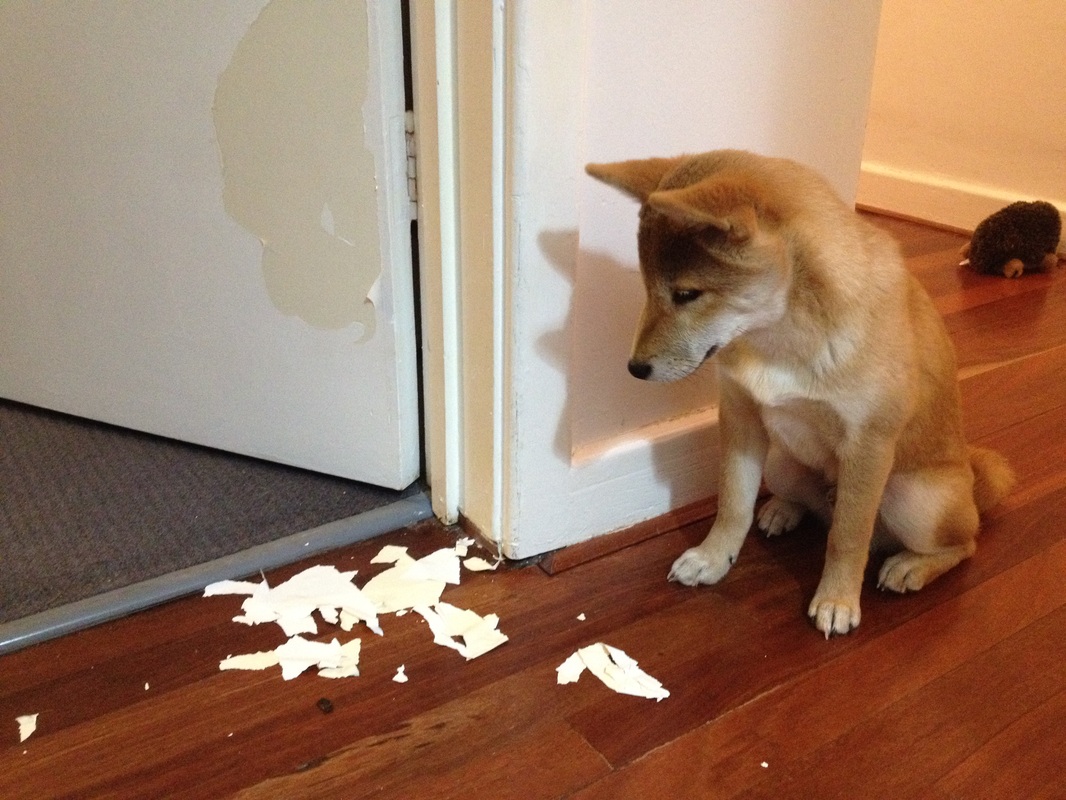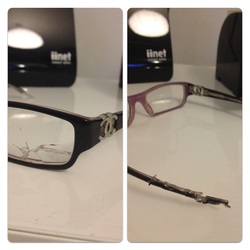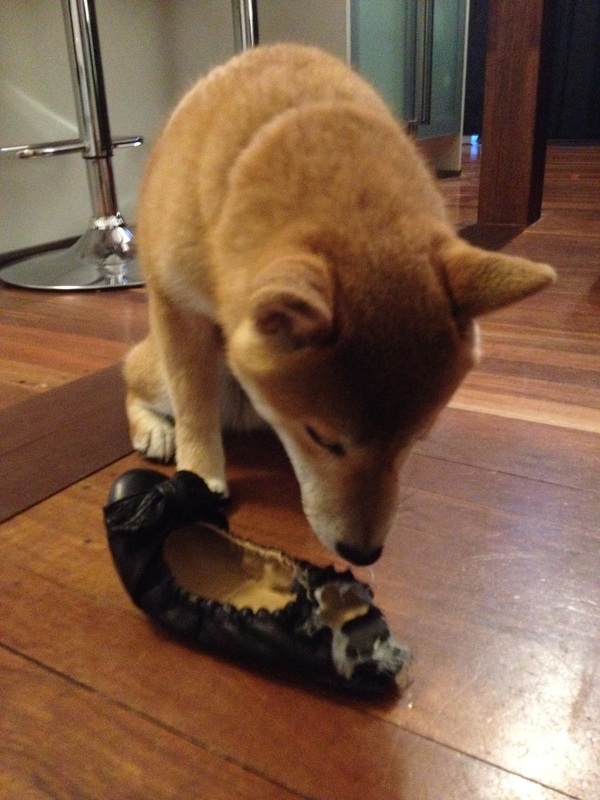With a puppy comes destruction. Samurai certainly liked to chew. Paint has been bitten off the wall, doors have been chewed, shoes, Chanel glasses (CHANEL) and everything and anything left around the house (see below photos).
But dog owners should know this and construct ways to inhibit and preoccupy their dog. Puppies and young dogs are especially prone to chewing because it can be painful when their teeth grow in. But even grown dogs will chew if they are distressed or bored. In some cases, chewing can even be good for your dog and keep his teeth clean.
But dog owners should know this and construct ways to inhibit and preoccupy their dog. Puppies and young dogs are especially prone to chewing because it can be painful when their teeth grow in. But even grown dogs will chew if they are distressed or bored. In some cases, chewing can even be good for your dog and keep his teeth clean.
Why do they chew?
Teething : This occurs between the ages 14-28 weeks. Chewing on objects helps sooth and loosen the gums around teeth, helping 'baby' teeth to fall out and their adult teeth to grow through.
Exploratory Chewing: Occurs roughly from the age of 28-52 weeks as puppies use their mouths to explore.
Calming / Stress Management: Chewing has a calming effect on your dog. Many dogs chew to relieve stress and anxiety. Most dogs are known to chew due to separation anxiety.
Teething : This occurs between the ages 14-28 weeks. Chewing on objects helps sooth and loosen the gums around teeth, helping 'baby' teeth to fall out and their adult teeth to grow through.
Exploratory Chewing: Occurs roughly from the age of 28-52 weeks as puppies use their mouths to explore.
Calming / Stress Management: Chewing has a calming effect on your dog. Many dogs chew to relieve stress and anxiety. Most dogs are known to chew due to separation anxiety.
How to stop them from chewing the things you love!
Since dogs have no sense of the value of the items they explore and chew, they can often be seen as destructive in our eyes.
Since dogs have no sense of the value of the items they explore and chew, they can often be seen as destructive in our eyes.
- To start with, have toys available to your dog. Make them all different in taste, texture and shape.
- Use these toys and play regularly with your dog. This lets them associate these toys with good things and they will more likely play with them when you are not around.
- Invest in a kong toy. These are hollow toys which can be filled with treats. Not only are they good for their teeth but it stimulates their thinking in how to get the food out of the kong; keeping their mind active.
- Remove valuable items or put them out of reach. It is YOUR fault for leaving them in places they can get to!
- When you see your dog chewing the correct items, praise them. This gives further positive reinforcement around chewing the correct objects.
- If you catch your dog about to chew on something they are not meant to, catch their attention with a firm "NO". Immediately give them something they can chew on and praise them when they do.
- MOST IMPORTANTLY, keep it all positive and reward correct behaviour. As the owner it is your fault for not correctly teaching your dog those items it can or cannot chew.



 RSS Feed
RSS Feed